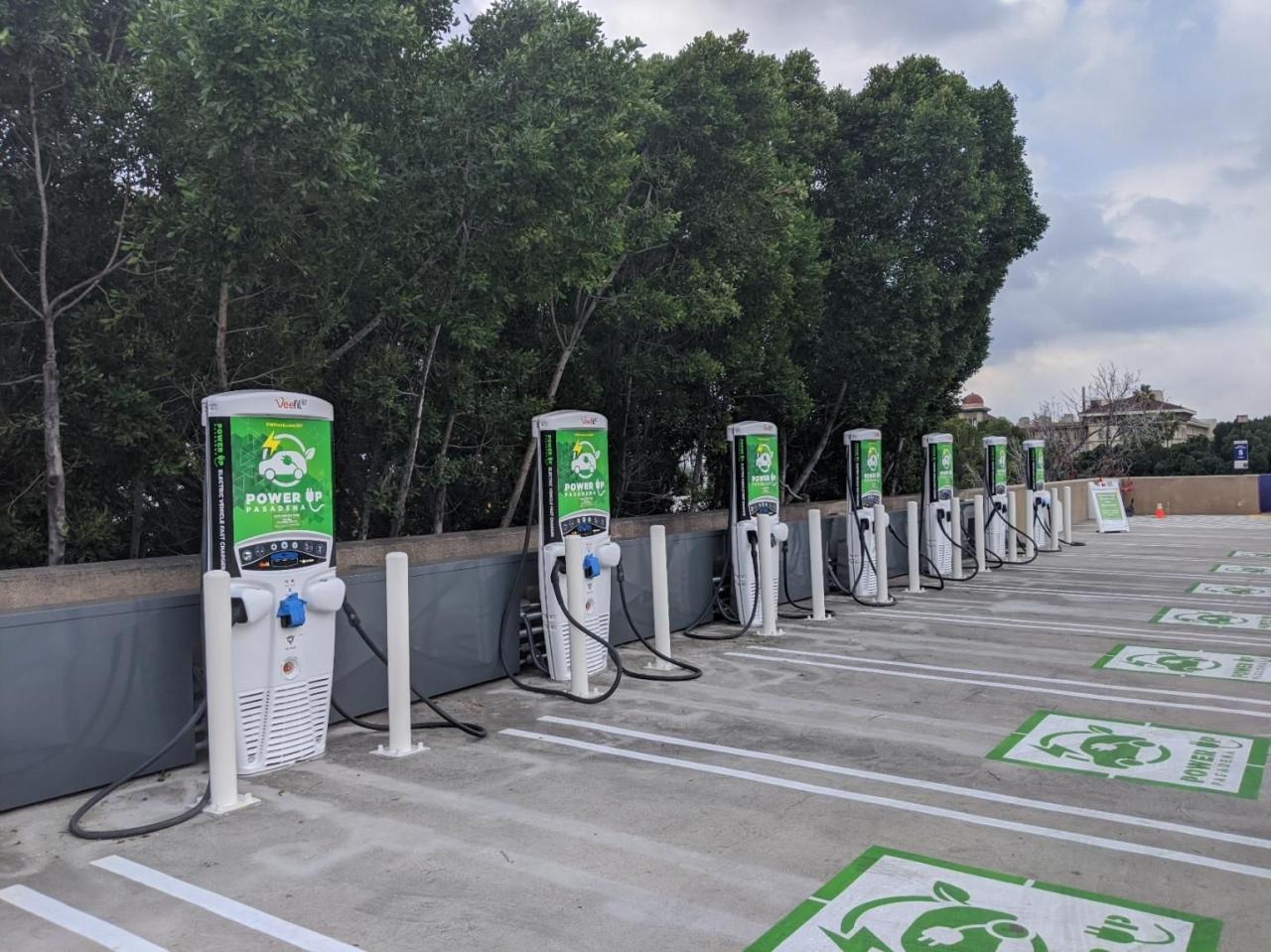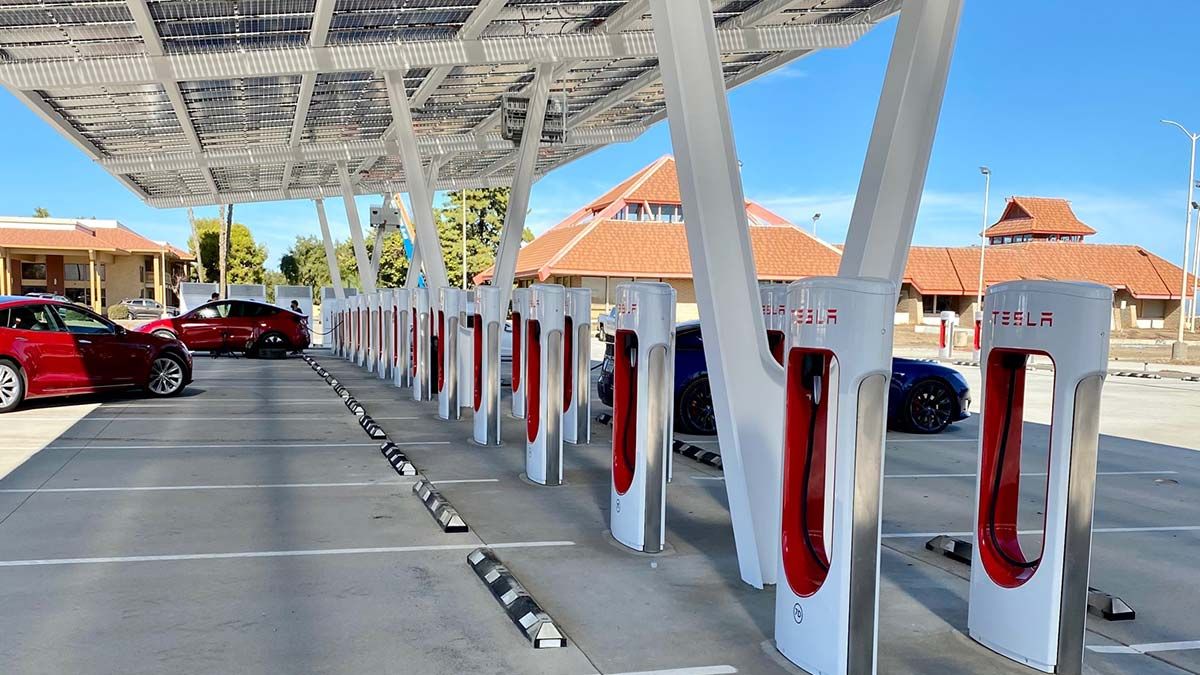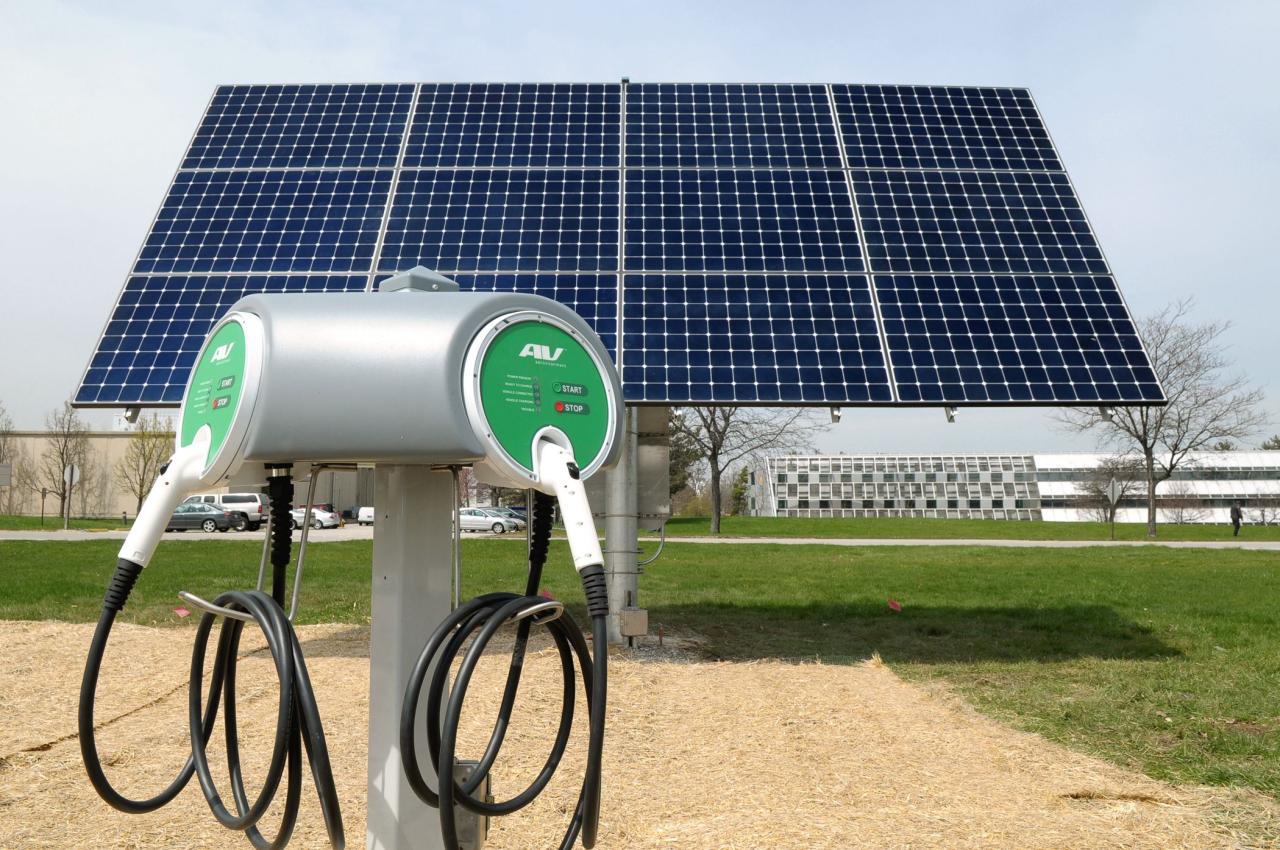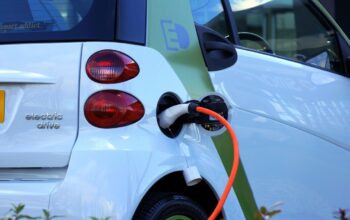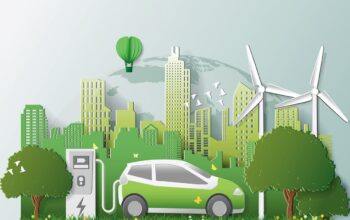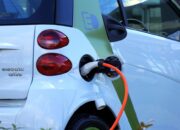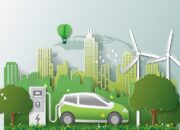The global transition to electric vehicles (EVs) represents one of the most profound shifts in the automotive industry’s history, promising cleaner air, reduced reliance on fossil fuels, and a quieter driving experience. Yet, the pace and ultimate success of this paradigm shift are inextricably linked to the robust development of charging infrastructure. More than just plugs and cables, a comprehensive, accessible, and efficient charging network is the invisible engine powering the electric revolution, directly influencing consumer adoption, fleet electrification, and the very feasibility of a fully electric future. This article will delve into the critical role of charging infrastructure, exploring its current state, the various types of charging, the challenges and solutions in its expansion, and the innovative trends shaping its evolution to meet the soaring demand for electric mobility.
The Indispensable Role of Charging Infrastructure
Imagine a world where gasoline stations are sparse, unreliable, or incompatible with your vehicle. That’s the “range anxiety” scenario that early EV adopters faced, and it remains a significant psychological barrier for many potential buyers. Charging infrastructure directly addresses this concern by providing convenient and reliable access to power, making EVs a practical and desirable alternative to internal combustion engine (ICE) vehicles.
A well-developed charging ecosystem is essential for:
A. Alleviating Range Anxiety: Knowing that charging stations are readily available, whether at home, work, or on long journeys, drastically reduces concerns about running out of power. B. Accelerating Consumer Adoption: A robust network encourages more individuals and businesses to switch to EVs by making daily use and long-distance travel feasible. C. Supporting Fleet Electrification: Logistics companies, ride-sharing services, and public transport operators require dedicated and scalable charging solutions to transition their large vehicle fleets. D. Maximizing EV Performance and Utility: Efficient charging allows EV owners to fully utilize their vehicle’s range and capabilities without lengthy downtimes. E. Driving Economic Growth: Investment in charging infrastructure creates jobs, fosters technological innovation, and stimulates the growth of supporting industries.
Without a proportionate build-out of charging facilities, the ambitious targets set for EV sales and emissions reductions worldwide will remain largely unattainable.
Understanding Charging Types and Technologies
EV charging is not a one-size-fits-all solution. It encompasses a spectrum of technologies, each designed to meet different needs in terms of speed, cost, and location. These are generally categorized by power output and charging speed:
A. Level 1 Charging (AC)
- Description: This is the slowest form of charging, typically using a standard 120-volt (V) household outlet. EVs come with a portable Level 1 charging cord.
- Power Output: Around 1.4 to 2.4 kilowatts (kW).
- Charging Speed: Adds approximately 3-5 miles (5-8 km) of range per hour.
- Use Case: Ideal for overnight charging at home for drivers with low daily mileage or as a supplementary option. It’s convenient because it requires no special installation, but it’s impractical for rapid charging needs.
B. Level 2 Charging (AC)
- Description: This is the most common type of charging found in homes, workplaces, and public destinations. It uses a 240V AC power source, similar to those used for electric clothes dryers or ovens.
- Power Output: Ranges from 3.3 kW to 19.2 kW, depending on the charger and the vehicle’s onboard charger capacity.
- Charging Speed: Adds approximately 12-80 miles (20-130 km) of range per hour. A typical EV can be fully charged in 4-10 hours.
- Use Case: Perfect for daily charging at home, workplace charging during business hours, and public charging at retail centers, hotels, and parking garages where vehicles are parked for several hours. Installation typically requires a dedicated circuit and a charging station (EVSE – Electric Vehicle Supply Equipment).
C. DC Fast Charging (DCFC)
- Description: Also known as Level 3 charging or rapid charging, DCFC bypasses the vehicle’s onboard AC-to-DC converter and delivers direct current (DC) power directly to the battery. This allows for significantly faster charging speeds.
- Power Output: Varies widely, from 25 kW to over 350 kW.
- Charging Speed: Can add 100-200+ miles (160-320+ km) of range in 15-45 minutes. The charging speed often tapers off as the battery approaches full capacity to protect its longevity.
- Use Case: Primarily for long-distance travel along highways, at major transportation hubs, and in urban areas where quick top-ups are necessary. DCFC stations require substantial grid infrastructure and dedicated electrical service.
D. Ultra-Fast Charging
- Description: A subset of DC Fast Charging, specifically referring to chargers with very high power outputs.
- Power Output: Typically 150 kW, 250 kW, 350 kW, and even higher (e.g., 500 kW prototypes).
- Charging Speed: Capable of adding hundreds of miles of range in mere minutes, depending on the vehicle’s acceptance rate.
- Use Case: Designed for the next generation of EVs with larger battery packs and higher charging acceptance rates, aiming to replicate the fueling experience of gasoline cars in terms of speed.
E. Emerging Charging Technologies
The innovation in charging is relentless:
- Wireless Charging (Inductive Charging): Allows EVs to charge without physical cables, simply by parking over a charging pad. While less efficient and slower than wired charging currently, it offers unparalleled convenience and could be integrated into parking spaces or even roads.
- Battery Swapping: Instead of recharging, the vehicle’s depleted battery is quickly swapped for a fully charged one. While offering ultra-fast “re-fueling,” it requires vehicle design standardization and significant infrastructure investment.
- Vehicle-to-Grid (V2G) / Vehicle-to-Home (V2H): Technologies that enable EVs to not just draw power from the grid but also feed electricity back into it or to a home during peak demand or power outages, transforming EVs into mobile energy storage units.
The Current State of Global Charging Infrastructure
The growth of charging infrastructure has been impressive, but its distribution and density vary significantly across regions.
A. North America
- United States: Has seen substantial growth in public charging, largely driven by federal incentives, state programs, and private investment. The National Electric Vehicle Infrastructure (NEVI) Formula Program is a key initiative aiming to build out a national network of DC fast chargers along major highways. However, charger reliability and interoperability remain challenges.
- Canada: Also investing heavily in public charging, particularly in its more populous provinces. Cold weather performance of both EVs and chargers is a unique consideration.
B. Europe
- Leadership in Public Charging: Europe, particularly Norway, Netherlands, Germany, and the UK, has been a leader in public charging density. Regulations, ambitious EV sales targets, and strong public-private partnerships have fueled this growth.
- Standardization: The Type 2 connector (Mennekes) is the standard for AC charging, and the CCS (Combined Charging System) is widely adopted for DC fast charging across the continent, contributing to better interoperability.
- Density Challenges: While some countries have excellent coverage, large geographical disparities still exist, especially in Southern and Eastern Europe.
C. Asia-Pacific
- China: By far the global leader in charging infrastructure, reflecting its massive EV market. China boasts the largest number of public and private charging points, driven by aggressive government policies, state-owned enterprises, and private companies like Star Charge and TELD. Standardization (GB/T connector) is also strong.
- South Korea and Japan: Also investing in robust charging networks, with a focus on both public and private solutions. Japan’s CHAdeMO standard was an early DCFC leader, though CCS is gaining traction globally.
- Southeast Asia and India: Rapidly growing EV markets are beginning to see significant investments in charging infrastructure, though they are still in nascent stages compared to leading countries.
D. Emerging Markets
- Latin America, Africa, Middle East: Charging infrastructure development is nascent but accelerating, often driven by pilot projects, private sector initiatives, and the gradual introduction of EV models by global manufacturers. Policy support and investment are critical for these regions to catch up.
Key Challenges in Charging Infrastructure Expansion
Despite rapid progress, several hurdles must be overcome to ensure charging infrastructure keeps pace with EV adoption.
A. Grid Capacity and Upgrades
- Strain on Local Grids: A high concentration of fast chargers in a particular area can strain the local electricity grid, requiring significant upgrades to transformers, distribution lines, and substations.
- Peak Demand Management: Simultaneous charging by many EVs, especially during peak hours, can lead to demand spikes, potentially causing blackouts or driving up electricity costs. Solutions involve smart charging, V2G, and integrating renewable energy sources with battery storage.
- Renewable Energy Integration: While EVs are cleaner, their environmental benefit is maximized when charged with renewable energy. Integrating more solar and wind power into the grid, along with energy storage solutions, is crucial for truly sustainable EV charging.
B. Standardization and Interoperability
- Connector Wars: While CCS is becoming dominant globally, the existence of multiple charging standards (CCS, CHAdeMO, GB/T, Tesla’s NACS) creates fragmentation and inconvenience for users, particularly for cross-border travel. The recent trend of major automakers adopting Tesla’s North American Charging Standard (NACS) in North America is a significant step towards greater standardization in that region.
- Payment Systems: Inconsistent payment methods (apps, RFID cards, credit card readers) across different charging networks can frustrate users. Streamlined “plug-and-charge” (ISO 15118) protocols, allowing automatic authentication and billing, are essential.
- Data Sharing: Lack of standardized data sharing between charging network operators, navigation apps, and vehicle manufacturers makes it difficult for drivers to find available, functional chargers and for planners to identify infrastructure gaps.
C. Funding and Business Models
- High Upfront Costs: Installing DC fast chargers is expensive, requiring significant capital investment for the charging hardware, grid connection, and installation.
- Slow ROI: In nascent EV markets, charger utilization rates might be low initially, leading to slow returns on investment for charging network operators.
- Diverse Business Models: Exploring various models, including public-private partnerships, government subsidies, utility company investments, and charging as an amenity (e.g., at hotels, retail stores), is vital to share the financial burden and accelerate deployment.
D. Location and Accessibility
- Equitable Distribution: Ensuring charging access in underserved areas, including rural communities, multi-unit dwellings (apartments, condominiums), and low-income neighborhoods, is crucial for equitable EV adoption.
- Convenience: Charging stations need to be located in places where people naturally stop for extended periods (e.g., shopping centers, restaurants, rest areas) or where they park overnight.
- Urban Challenges: In dense urban environments, space for large charging hubs can be limited, and street parking residents often lack access to home charging. Solutions include curbside charging and dedicated charging hubs.
E. Reliability and Maintenance
- Uptime Issues: “Broken chargers” are a significant pain point for EV owners. Ensuring consistent uptime and rapid repair of faulty stations is critical for user confidence.
- Maintenance Needs: Chargers, especially fast chargers, are complex electronic equipment exposed to the elements, requiring regular maintenance and prompt technical support.
- Software Glitches: Beyond hardware, software bugs, communication errors, and network issues can also render chargers unusable.
Solutions and Innovations Driving Future Growth
Addressing these challenges requires a multi-pronged approach involving technological innovation, policy support, and collaborative efforts.
A. Smart Charging and Load Management
- Dynamic Pricing: Offering lower electricity rates during off-peak hours encourages users to charge when demand on the grid is lower.
- Load Balancing: Intelligent systems distribute available power efficiently across multiple charging points at a single location, preventing grid overload.
- Vehicle-to-Grid (V2G) and Vehicle-to-Home (V2H): As mentioned, these technologies allow EVs to act as distributed energy storage, stabilizing the grid and potentially generating revenue for owners.
- Managed Charging: Utility companies can remotely manage charging sessions to shift demand away from peak times, often in exchange for incentives to EV owners.
B. Rapid Deployment Models
- Prefabricated Charging Hubs: Modular, pre-built charging stations that can be quickly deployed with minimal on-site construction, reducing installation time and costs.
- Mobile Charging Solutions: Vans equipped with chargers that can provide emergency top-ups or temporary charging at events, offering flexibility.
- Charging as an Amenity: Integrating chargers into existing infrastructure like lampposts, parking meters, or commercial buildings reduces the need for new dedicated sites.
C. Policy and Regulatory Frameworks
- Government Incentives and Subsidies: Grants, tax credits, and rebates for charger installation (for both public and private entities) are crucial to de-risk investment and accelerate deployment.
- Building Codes: Mandating EV charging readiness in new constructions (residential and commercial) ensures future-proofing.
- Standardization Mandates: Governments can play a role in promoting or mandating common charging standards within their jurisdictions to improve interoperability.
- Permitting Streamlining: Simplifying and accelerating the permitting process for charger installation reduces bureaucratic delays.
- Clear Pricing Regulations: Ensuring transparency and fair pricing for public charging to protect consumers.
D. Private Sector Innovation and Collaboration
- Diverse Business Models: Exploration of subscription services, membership programs, advertising-supported charging, and fleet-specific solutions.
- Strategic Partnerships: Collaborations between automakers, utility companies, charging network operators, and real estate developers to identify optimal locations and share investment.
- Software Solutions: Development of advanced apps for charger discovery, real-time availability, payment processing, and route planning.
- Battery Technology Improvements: Advances in battery chemistry allowing for faster charging speeds and higher energy density reduce the amount of time needed at chargers.
E. Integration with Renewable Energy
- Solar Canopies and Battery Storage: Combining charging stations with solar panels and on-site battery storage reduces reliance on the grid, lowers operational costs, and increases the environmental sustainability of charging. This is especially important for fast chargers that draw significant power.
- Microgrids: Developing localized grids that can support charging hubs, potentially running on renewable energy and providing resilience during grid outages.
The Future Landscape: Seamless Electric Mobility
The trajectory of charging infrastructure is towards a future where charging is not a point of friction but a seamless, integrated part of the daily routine, fading into the background much like refueling a gasoline car does today.
A. Ubiquitous Home and Workplace Charging
The vast majority of charging will continue to occur where vehicles are parked for extended periods: at home overnight and at the workplace during the day. This requires continued investment in residential charging solutions, particularly for multi-unit dwellings, and incentives for businesses to install workplace chargers.
B. High-Power Charging Hubs on Major Corridors
For long-distance travel, a network of ultra-fast charging hubs strategically located along major highways will be critical. These hubs will resemble modern gasoline stations, offering multiple high-power chargers, amenities, and potentially services like food and restrooms, ensuring rapid turnaround times.
C. Urban Destination Charging
In urban areas, a dense network of Level 2 chargers at retail centers, entertainment venues, public parking garages, and curbside locations will cater to drivers who lack home charging or need to top up while running errands.
D. Smart, Connected, and Sustainable Networks
The future charging network will be deeply integrated with smart grid technologies, optimizing energy consumption, leveraging renewable sources, and providing real-time data to both drivers and grid operators. It will be characterized by:
- Predictive Analytics: Using AI to forecast charging demand and optimize power distribution.
- Cybersecurity: Robust security measures to protect charging infrastructure from cyber threats.
- User-Centric Design: Charging stations that are intuitive, reliable, and accessible for all users, including those with disabilities.
- Visual Integration: Charging infrastructure that blends aesthetically into urban and rural landscapes.
Conclusion
The electric vehicle revolution stands at a pivotal juncture, poised for exponential growth. While exciting new EV models with longer ranges and advanced features capture headlines, it is the underlying charging infrastructure that forms the indispensable backbone of this transformation. From Level 1 trickle charging at home to ultra-fast DC charging hubs along major highways, each segment of the charging ecosystem plays a vital role in making electric mobility practical, convenient, and appealing.
Overcoming the challenges of grid capacity, standardization, funding, and equitable distribution requires sustained investment, innovative technological solutions, and robust policy support. However, the momentum is undeniable. With continuous advancements in smart charging, renewable energy integration, and user-centric design, the charging network is evolving from a mere necessity into a sophisticated, intelligent system that will not only power our vehicles but also contribute to a more resilient and sustainable energy future. The progress of electric vehicles is intrinsically linked to the power of their charging infrastructure; as one advances, so too does the other, driving us closer to a truly electric world.

